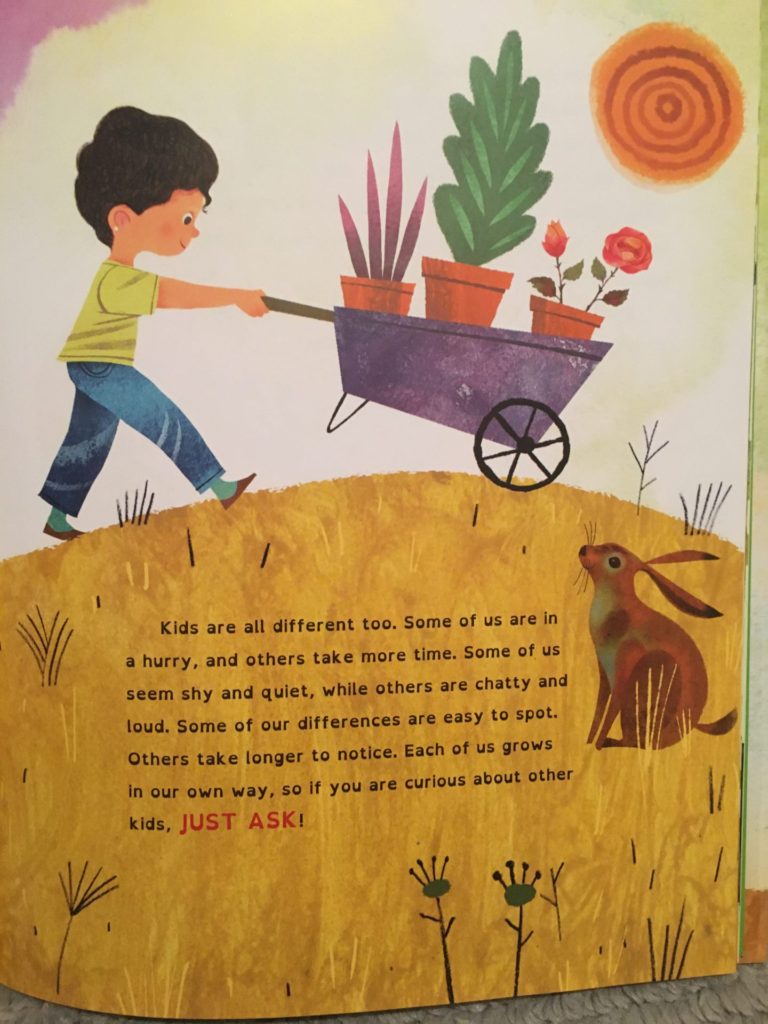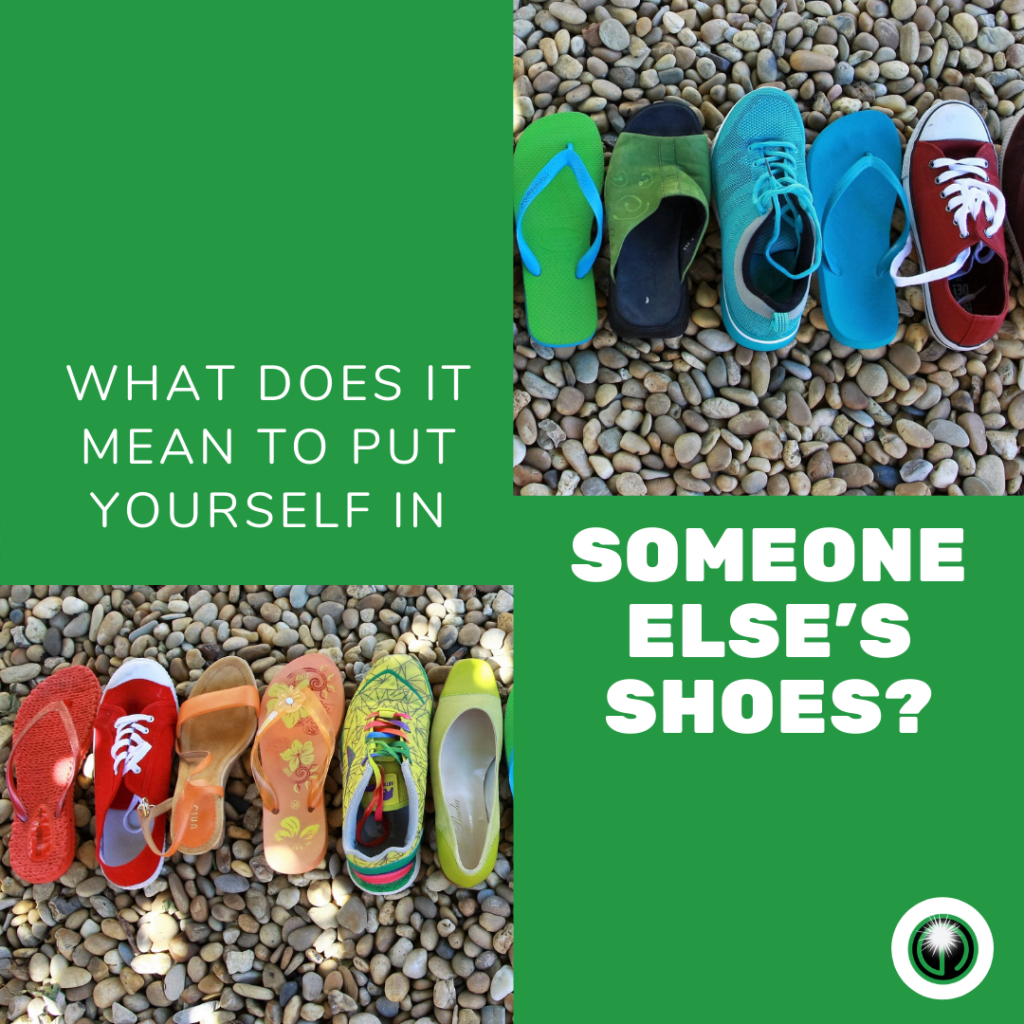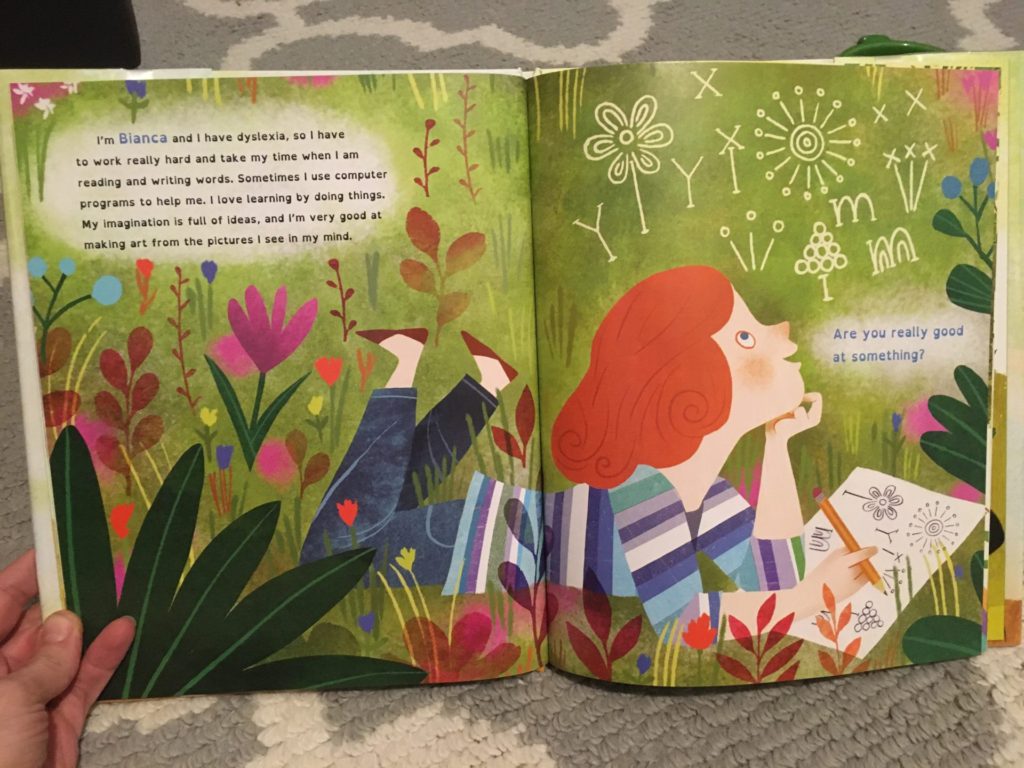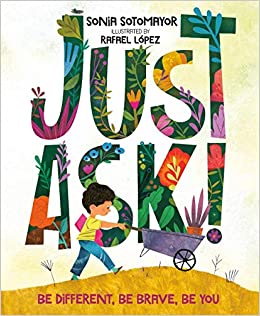Why I Picked It Up: I loved the colors on the front and the illustration on the cover. The title intrigued me, as did the tag line. Diversity is one of the topics we collect books on for our Newer Choices session. Bonus: Sotomayor is in the Texas standards!
Why I Finished It: I have to confess, I never “finished” it. It’s a great book to read a few pages from and then put away, think and reflect, and then read a few more pages. I loved how this book wrapped up a lot of the learning disabilities and other disabilities we see in students in our classrooms and put them all in the context of planting a garden. The garden analogy is perfect for considering all the different types of students that one might find in a classroom. Sotomayor states that “Gardens are magical places. Thousands of plants bloom together, but every flower, every berry, every leaf is different.” Though differences can be uncomfortable, they are what make the garden beautiful.
Sotomayor herself struggled with being different. In her letter to readers, she explains that she was diagnosed with juvenile diabetes when she was seven and often felt the curious stares of her classmates as she had to give herself shots of insulin.

She wraps up her beautiful letter with a message of commonality and unity and empowerment. Yes, we’re all different, but we have a lot in common as well. And instead of fearing those differences, she encourages readers to explore them together. So many times students are afraid to ask about a student who is different or who has to do different things, but Sotomayor encourages an open dialogue towards understanding – just ask!
“Challenges often give us strength that others can’t imagine.”
Who I’d Give It To: Every. Single. Teacher. With our current social climate, this book is a MUST for every classroom library.
Integration Ideas
Theme: Empathy

Essential Question: What does it mean to put yourself in someone else’s shoes?
As teachers, we play a crucial role in helping students talk openly about inequality and teaching students to be tolerant and understanding of those who are different.
Text-to-Self Connections and Personal Narratives

At the end of each page it asks a question, begging the reader to connect with the child discussed on the page. For example, on the page where a child discusses how he has to take insulin for diabetes, the question at the bottom of the page asks if the reader needs to take medicine to be healthy. I would never MAKE students share their answers to each question, but I would ask them to think about it. If they are all comfortable with each other, they could get into groups based on similarities or differences. Have students reflect on their own responses to the questions and then ask them how can they show tolerance to each other’s differences.
In the end, Sonia describes what she does when something is different or new. Ask students to think of a time they had to do something different or new. Make sure everyone has an idea. Some examples might be going to a friend’s house for the first time, trying out for a team or production, ordering their own food, paying at a check-out counter, etc. Then ask students how they felt and why. Finally, ask students how they react when others are different or doing something different from the way everyone else does it. This is a good time to consider rethinking how we act.
Have students write a personal narrative about a time they experienced something new or different. Make sure they describe their feelings and the way people reacted to them.
Conventions: Hyphens and Dashes
Share the difference with students, hyphens are shorter and connect without spaces, while dashes are longer and separate statements with spaces.
Sotomayor uses dashes on a few different pages. Pull a few of them out as mentor sentences. Ask the students what they notice, discuss different conventions used, and then concentrate on the dash. Example:

“I’m great at dinosaurs — I know all about them!”
Students will probably notice the capital letters, the exclamation mark, the contraction, etc. When students share these, praise them while reminding them of the rule for the particular punctuation mark, and keep going.
When you get to the dash, ask the students what they think it’s doing. Think about how the first sentence connects to the second sentence? Does the second sentence explain the first better? Does the second sentence add emphasis to the first? Why do you think the author didn’t just use a period and a new sentence?
Writing Activity: Getting to Know Each Other

This is a great mentor text to consider writing a class book or a joint slides presentation introducing the class. Each page in this book explains how a student is different or unique in some way and then asks a question in connection to that difference. Each student can write a page about them that explains a way they are different from everyone else and ask a question that might help someone else make a connection with them. Put all the pages together to make a class book.
Read more about creating collaborative Google Slides assignments here.
Text-to-Text Connections
- The Day You Begin by Jacqueline Woodson
- All Are Welcome by Alexandra Penfold
- I Can Do Hard Things by Charity Russell
- Whoever You Are by Mem Fox and Leslie Staub







I have decided to by the book, and give it to my sister, who currently teaches English in a primary school. Thanks for you precious advice, this world needs to be changed and made better by spreading a culture of tolerance, self empowerment and kindness. Books can be the key to a new culture of justice, equality, sisterhood, emotional bond.
We completely agree! Thank you so much for your comment.
What a great application for international teaching. We all have uniqueness to bring. From, Barranquilla, Colombia.